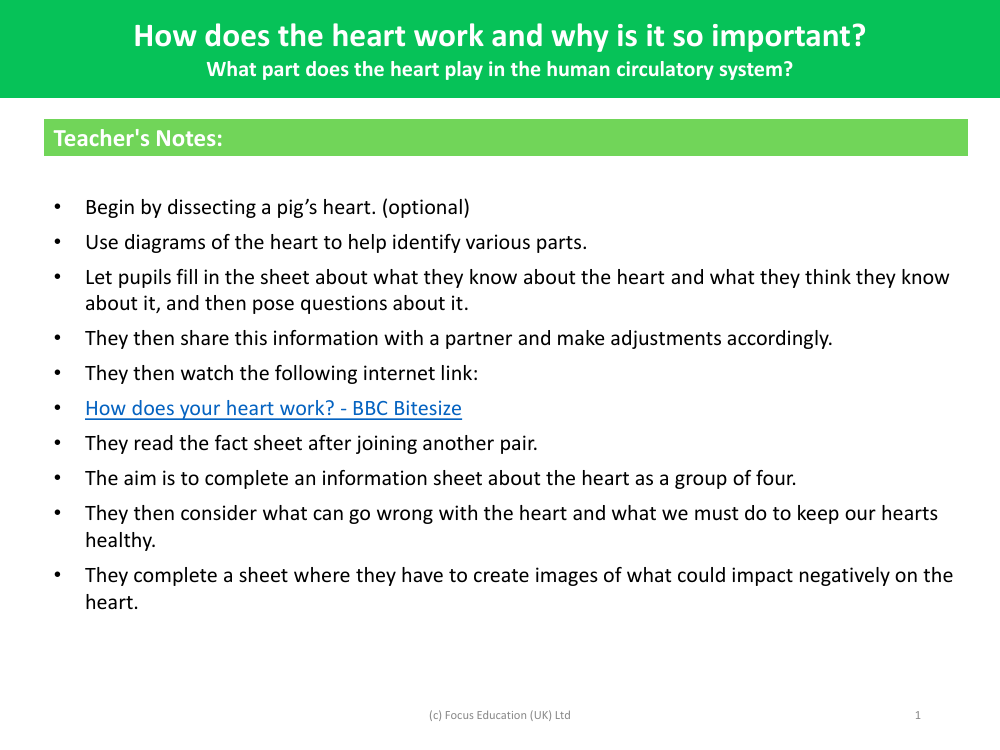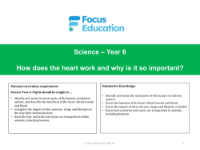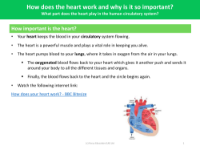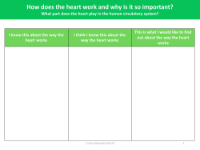What part does the heart play in the human circulatory system? - Teacher notes

Science Resource Description
The heart is a central organ in the human circulatory system, playing a crucial role in sustaining life by pumping blood throughout the body. In educational settings, teachers often employ interactive methods to explore the function and importance of the heart. Initially, students might be given the opportunity to dissect a pig's heart, which is anatomically similar to a human heart, to gain practical insight into its structure. Diagrams are also used to identify and label different parts of the heart, enhancing students' understanding of its complex anatomy.
Students are encouraged to engage with their pre-existing knowledge about the heart by filling in worksheets, where they can document what they know and what they assume about the organ. This exercise is designed to stimulate curiosity and formulate questions that can be discussed with classmates. After sharing and refining their thoughts with a partner, students are directed to educational resources, such as the BBC Bitesize website, where they can watch informative videos and read fact sheets. The collaborative aspect of the lesson is highlighted as students join another pair to complete an information sheet about the heart, working as a group of four. This collaborative learning approach helps to consolidate their knowledge. Furthermore, the lesson extends beyond the heart's mechanics to consider health implications, prompting discussions on potential heart problems and lifestyle choices that contribute to a healthy heart. Students are tasked with creating visual representations of factors that could negatively affect heart health, reinforcing the concept that maintaining a healthy heart is vital for overall well-being.





